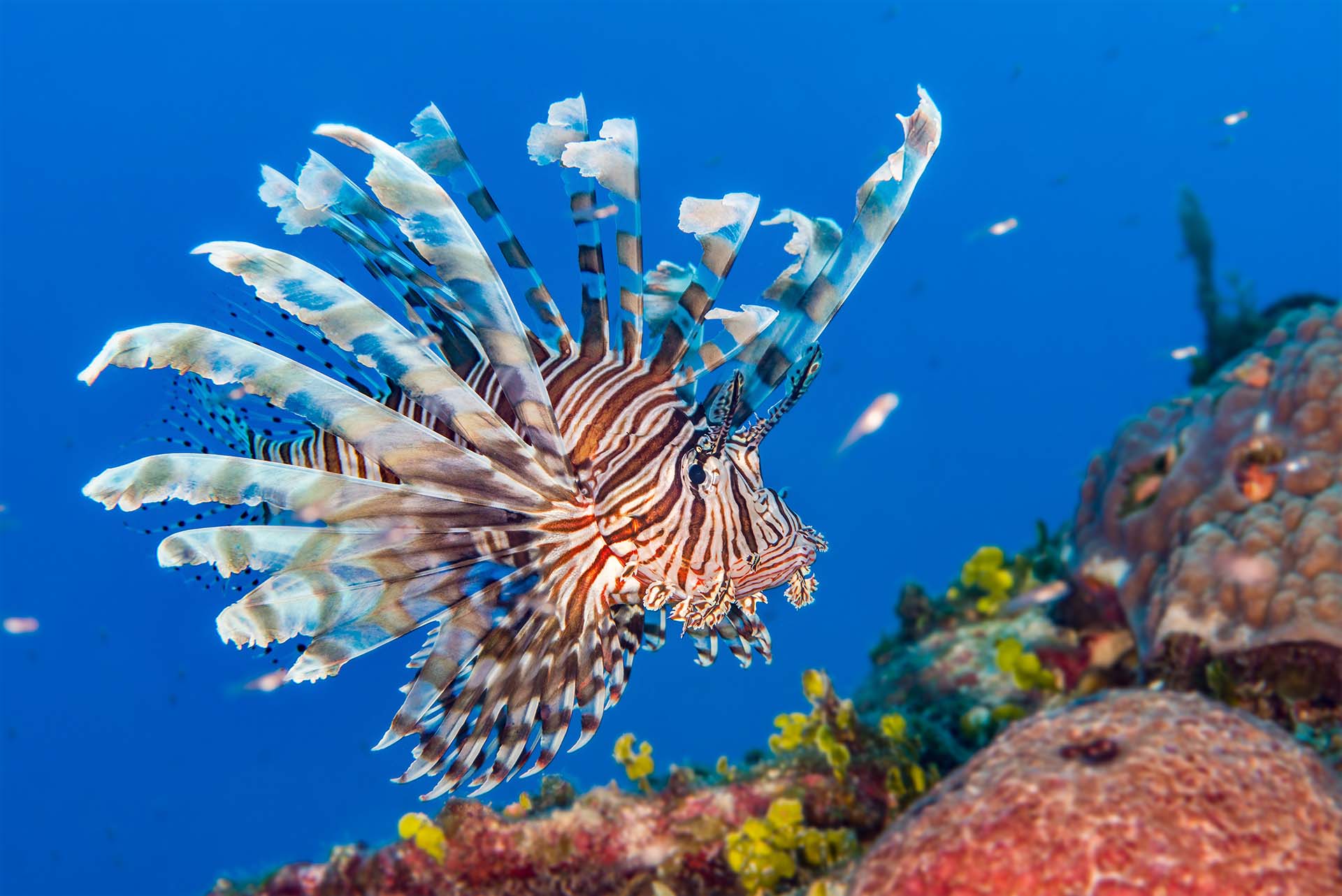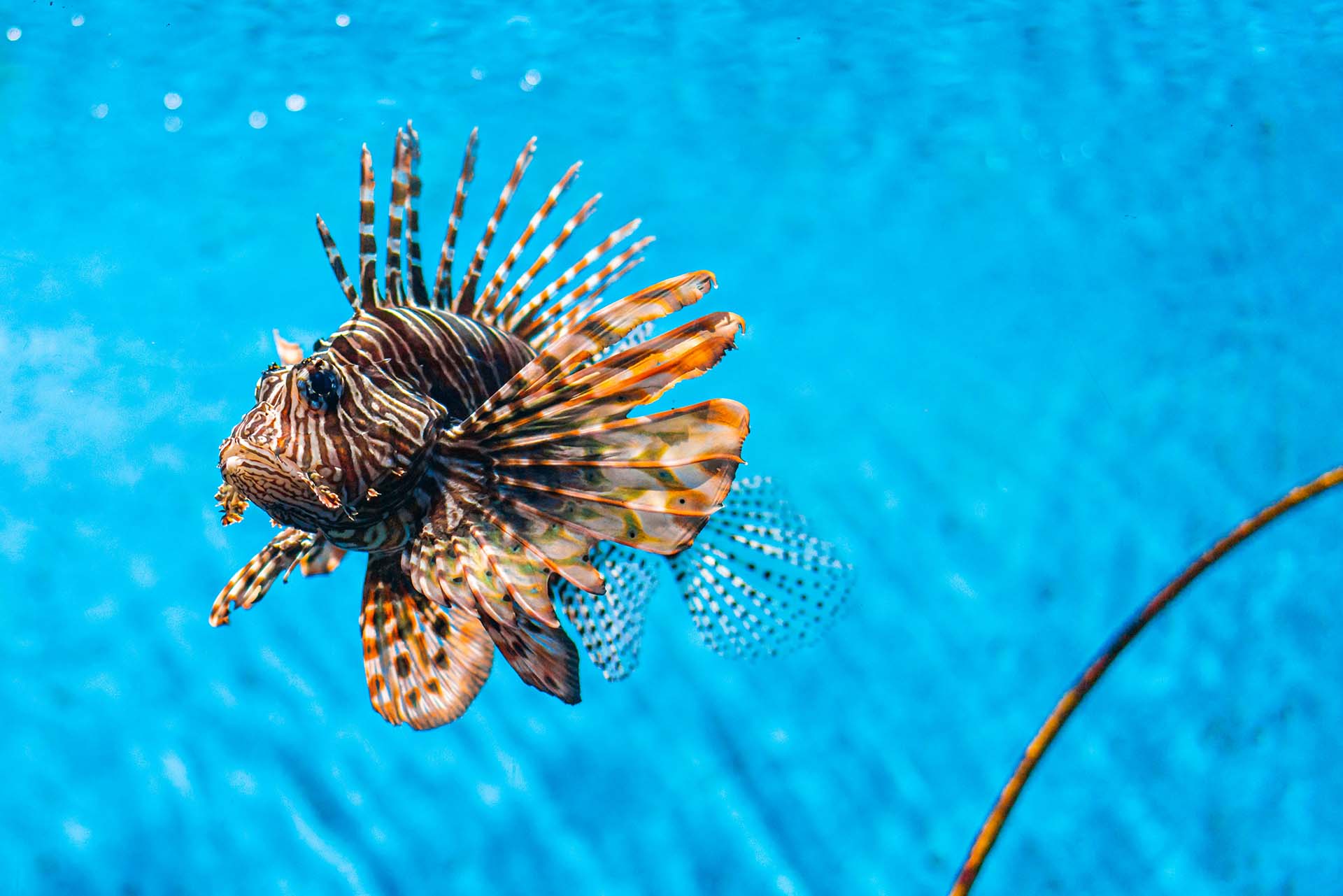Lionfish, a stunning yet invasive species in many parts of the world, pose a significant threat to marine ecosystems. This guide on lionfish fishing offers an in-depth exploration of the most effective and sustainable techniques for catching these beautiful but destructive creatures. From understanding the behavior to mastering the art of spearfishing and handling, we got you covered.
Getting to Know Your Target – The Lionfish
It’s crucial to acquaint yourself with this remarkable yet invasive species. The species, scientifically known as Pterois, is a group of stunning marine fish known for their distinct appearance and spiky fins.
They are native to the Indo-Pacific region but have invaded the waters of the Atlantic Ocean, Caribbean Sea, and Gulf of Mexico, causing significant harm to native ecosystems. Recognizable by their vibrant red, orange, and white stripes, they are a captivating sight beneath the waves. To successfully target these intriguing creatures, it’s essential to understand their physical attributes, behaviors, and the habitats they frequent.
Characteristics of the Lionfish
They possess unique characteristics that make them both fascinating and formidable. They are equipped with venomous spines along their dorsal, pelvic, and anal fins, which serve as a defense mechanism against potential predators.
These spines can deliver a painful sting if mishandled, making it essential for hunters to exercise caution and use appropriate gear. Additionally, their striking appearance, with long and feathery pectoral fins, serves as a mesmerizing camouflage in the reef environments they inhabit.
Behaviorally, they are ambush predators, patiently waiting for smaller fish and crustaceans to swim within striking range. They are known for their voracious appetites and are often found near coral reefs and rocky outcrops where they can hide and hunt effectively. Understanding their hunting techniques, preferred habitats, and daily routines is crucial for any angler looking to target these fish safely and effectively.
Why Lionfish Are a Desirable Catch
This type of fishing has gained popularity for several compelling reasons. First and foremost, it presents a significant challenge to anglers due to the fish’s elusive nature and venomous spines. This makes hunting a thrilling and skill-testing endeavor, attracting adventurous and famous fishermen and women seeking a unique angling experience.
Beyond the thrill of the hunt, the creatures are also prized for their culinary value. Their meat is white, flaky, and mild in flavor, often compared to popular seafood choices like grouper and snapper. Many restaurants now feature it on their menus as a sustainable seafood option, promoting its consumption to control their invasive populations.
Perhaps the most critical reason is their devastating impact on native marine ecosystems. Invasive lionfish can outcompete and decimate native fish populations, posing a severe threat to biodiversity.
By actively participating in hunting, anglers contribute to reef conservation and help protect other fragile marine habitats from this invasive species. This dual purpose – enjoying a challenging sport and aiding environmental preservation makes this type of fishing a desirable and responsible pursuit for conscientious anglers.
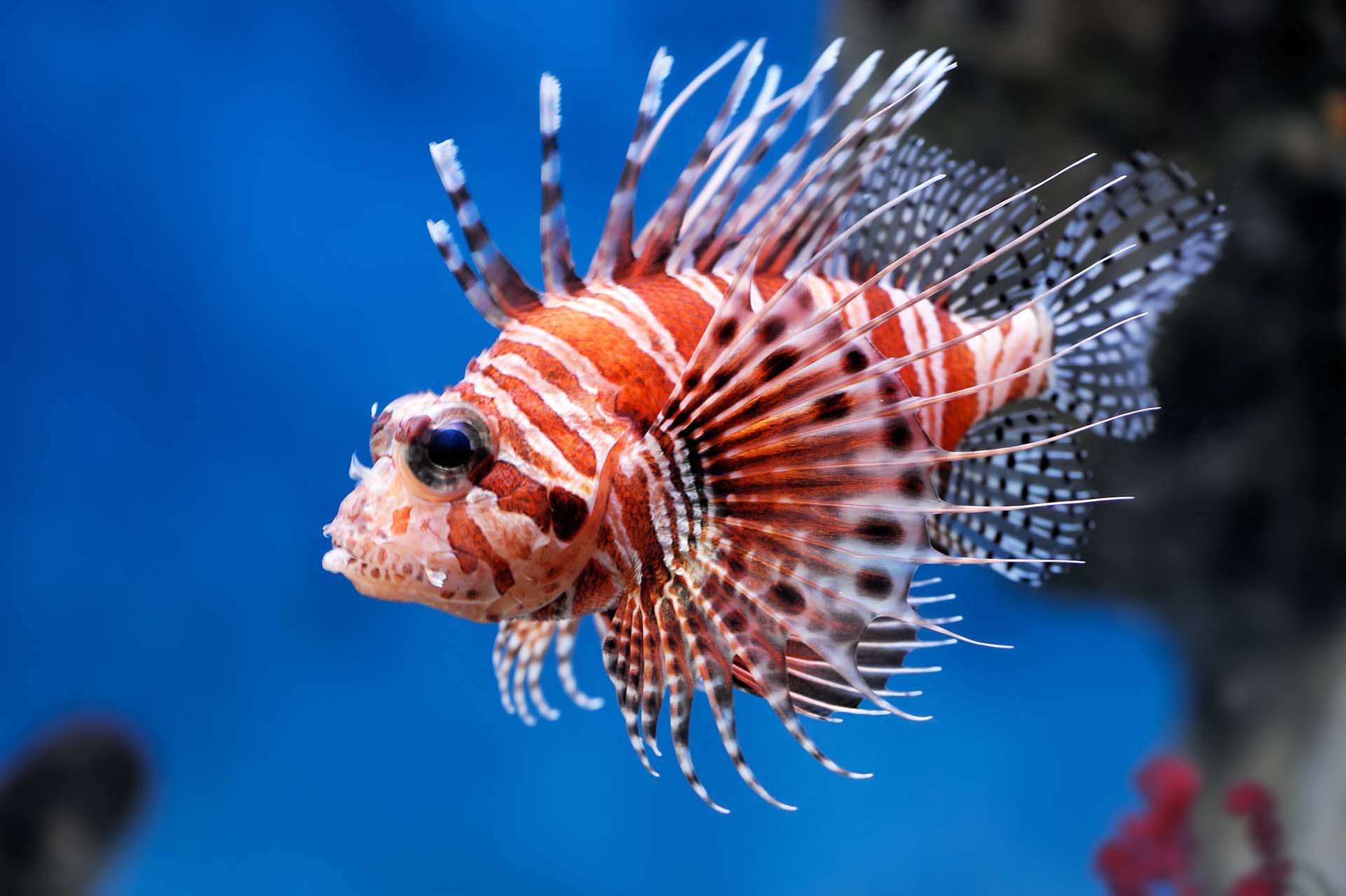
Essential Gear for Lionfish Fishing and Invasive Species Management
Fishing requires specialized gear to ensure your safety and success in catching this invasive species. Whether you’re a seasoned spearfisher or new to the sport, having the right safety equipment is essential.
Choosing the Right Spearfishing Equipment
Spearfishing is at the heart of lionfish hunting, and choosing the right equipment is paramount. These fish are notorious for their venomous spines, so it’s crucial to use specialized spears designed for their capture.
The two primary types of spears are pole spears and Hawaiian slings. Pole spears are simple yet effective, consisting of a pole with a tip that you use to spear the fish. Personally, I find the Trubrave Spearfishing Pole to be a great choice. Hawaiian slings, on the other hand, are more versatile, featuring a sling that propels the spear towards the target with the force of a rubber band. In addition to the spear, other essential gear includes:
- Containment device – consider using a containment device such as a zookeeper or a mesh bag to safely store captured creatures without risking stings.
- Diving gloves – diving gloves with puncture-resistant material are crucial for protecting your hands from potential spines.
- Retrieval tool – a specific retrieval tool can also be handy for safely removing them from crevices in the reef.
- Dive knife – always include a reliable dive knife as part of your equipment to free yourself from entanglements or cut spines when necessary.
Protective Clothing and Safety Gear
When targeting lionfish, safety should be a top priority due to their venomous spines. Protective clothing and gear play a crucial role in minimizing the risk of stings and injuries. Diving gloves designed for hunting are essential, as they provide a barrier against spines while allowing you to handle captured fish. These gloves typically feature puncture-resistant materials, such as Kevlar, to ensure your hands remain safe.
In addition to gloves, consider wearing a wetsuit or dive skin to cover exposed skin and provide an extra layer of protection. Some anglers opt for full-body dive suits with hoods to offer complete coverage. Along with protecting you from stings, these garments also shield you from the elements and potentially hazardous marine life.
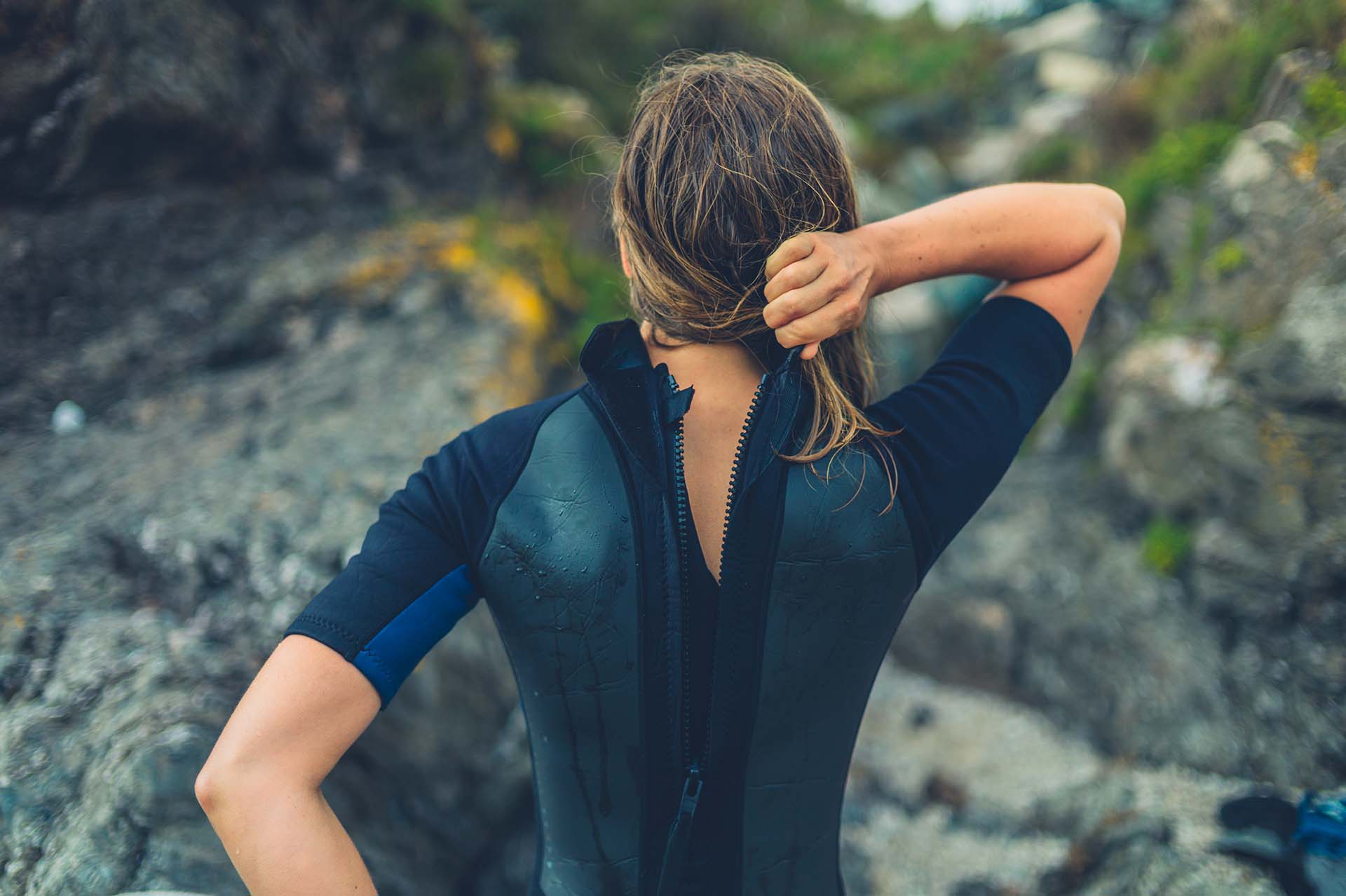
Effective Lionfish Fishing Techniques
To become a proficient lionfish hunter, mastering effective fishing styles and techniques is essential. There are two primary approaches to catching – spearfishing techniques and the use of bait and traps. Understanding these techniques, along with spearfishing skills and strategies, will empower you to successfully target these invasive predators while contributing to marine conservation efforts.
Spearfishing Skills and Strategies
Spearfishing is the most common and rewarding method for catching. Success in this technique relies on a combination of skills and strategies. Proper positioning is critical – lionfish are ambush predators that often hide in reef crevices or under ledges. Approach cautiously, maintain buoyancy control, and position yourself for a clear shot.
Aiming accurately is paramount. Lionfish have relatively small target areas, primarily their heads and bodies. Take your time to line up your shot, aiming for the area behind the eyes to ensure a humane and efficient kill. Once you’ve locked onto your target, execute a swift and controlled strike, keeping in mind the venomous spines. Retrieving the fish with a containment device should follow immediately to minimize the risk of escape or injury.
Using Bait and Traps
While spearfishing is the preferred method for hunting, there are alternative approaches involving fishing bait and traps. Some anglers use specially designed traps that entice the fish with bait and then contain them without the need for direct contact. These traps are typically constructed with funnel entrances to prevent the escape of captured fish.
Another bait-based method involves using a pole spear with a detachable tip designed to impale the fish. Once the lionfish is lured by the bait, the spear tip is released to capture it, offering a more hands-off approach.
It’s important to note that these alternative methods may not be as selective as spearfishing, as they can capture other non-targeted species. Therefore, they require diligent monitoring to ensure safe capture while minimizing harm to other marine life.
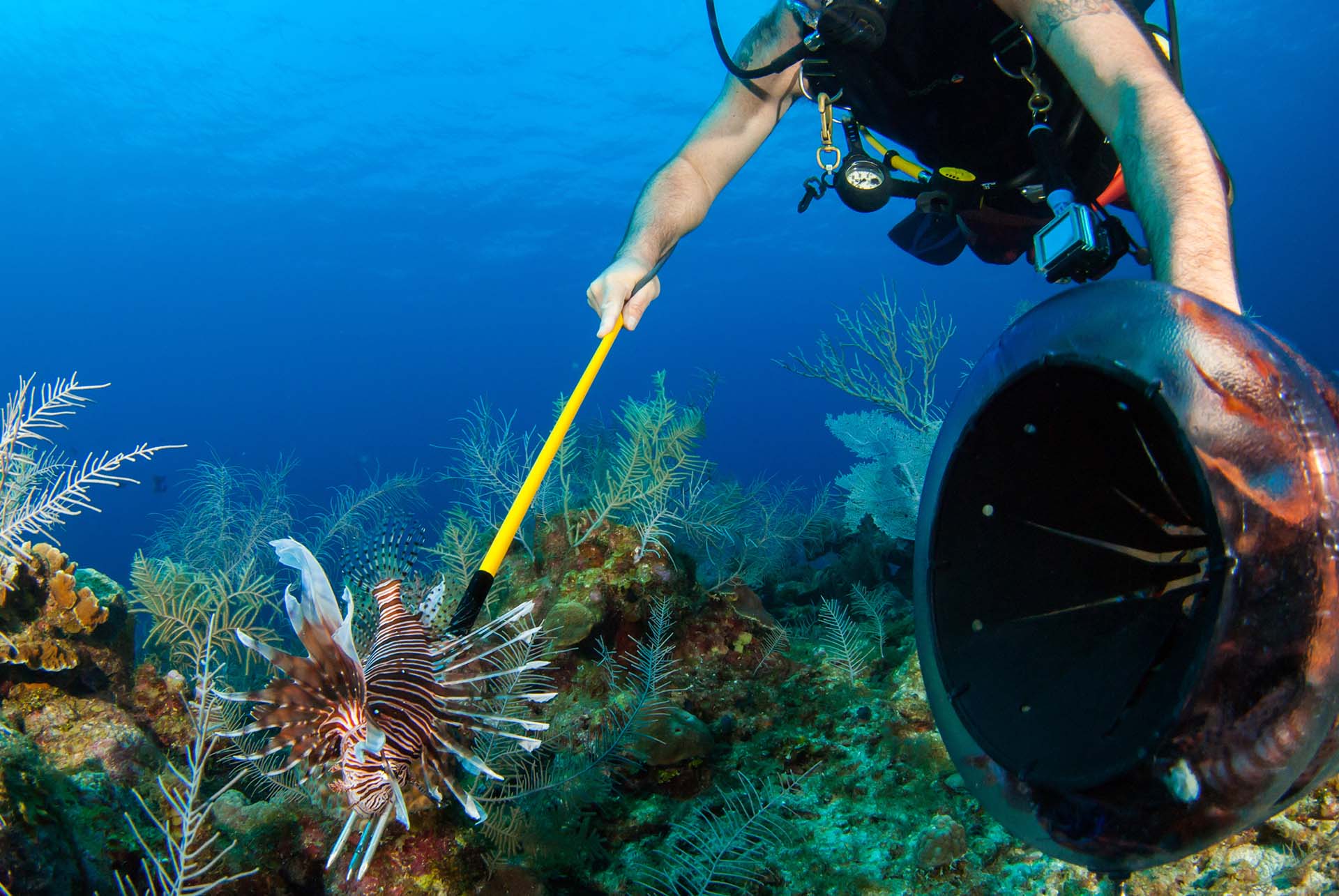
Where and When to Fish for Lionfish
Knowing where and when to fish is key to a successful hunt. Let’s take a look at the prime locations where lionfish are often found and the seasonal patterns that influence their behavior. By understanding these factors, you can maximize your chances of encountering these invasive predators.
Identifying Prime Lionfish Locations
Lionfish are known to inhabit a variety of underwater environments, with some locations being more favorable for encounters. Among the top prime locations are coral reefs, wrecks, and underwater ledges. Coral reefs, in particular, are favored by creatures due to the abundance of hiding spots among the intricate coral formations. These fish often lurk in crevices and under overhangs, waiting to ambush prey.
Wrecks and artificial reefs also attract lionfish. These structures provide both shelter and a source of prey, making them ideal hunting grounds. Similarly, underwater ledges and rocky outcrops offer hiding places, and they are often found in close proximity to these features. Consider diving in areas where these prime locations intersect, as this increases your chances of encountering this intriguing species.
Understanding Seasonal Patterns
Lionfish behavior can vary with the seasons, influencing when and where you should fish for them. While they are present year-round in many regions, understanding these seasonal patterns can be advantageous. In general, lionfish tend to be more active during warmer months. Spring and summer often see increased activity as water temperatures rise.
During this time, they may venture into shallower waters, making them more accessible to divers. However, it’s essential to remain cautious as their behavior can be unpredictable. Additionally, lionfish are often more active during dawn and dusk, which are considered optimal times of day for lionfish fishing. These twilight hours coincide with their natural hunting instincts, as they prey on smaller fish and crustaceans.
Keep in mind that while these patterns provide valuable guidance, lionfish can still be encountered year-round and at any time of day. Nonetheless, understanding the influence of seasons and times of day on lionfish behavior can help you plan your dives and increase your chances of a successful hunt.
Handling and Utilization of Caught Lionfish
Once you’ve successfully caught the creature, it’s crucial to handle them safely and make the most of your harvest. So, let’s see how important safe lionfish removal spines is to prevent envenomation, as well as the culinary aspect of cooking and preparing as a delectable delicacy.
Safe Handling and Removal of Spines
Safe handling and removal of spines is essential to avoid envenomation. When handling a creature, wear puncture-resistant dive gloves for protection. To remove spines, use needle-nose pliers or specialized tools, grasping the spine at the base and pulling it out opposite to its angle. Take care not to squeeze the spine to prevent venom release. Properly disposing of removed spines ensures both your safety and responsible environmental fishing.

Navigating the Depths – Lionfish Fishing as Adventure, Conservation, and Culinary Artistry
Lionfish fishing is a captivating and environmentally responsible pursuit that combines adventure with conservation. By understanding the characteristics, mastering effective techniques, and handling them safely, anglers can make a positive impact on marine ecosystems while enjoying a unique delicacy. As you venture into the world of lionfish fishing, remember that your efforts contribute not only to your own enjoyment but also to the preservation of our precious marine habitats.
What Makes Lionfish Fishing Unique?
Lionfish fishing is unique due to its combination of adventure, conservation, and culinary potential. It offers the thrill of hunting an invasive species while contributing to marine preservation, and lionfish’s delectable meat makes it a culinary delight.
Can You Go Lionfish Fishing in Florida?
Yes, lionfish are a common fish to catch in Florida, and there are efforts to control their population through fishing and removal programs. However, there are regulations and guidelines in place to ensure safe and responsible lionfish hunting. Be sure to check with local authorities and follow any applicable rules when lionfish fishing in Florida.
How Can I Safely Remove a Lionfish’s Venomous Spines?
To safely remove lionfish spines, wear puncture-resistant dive gloves and use needle-nose pliers or specialized tools. Grasp the spine at the base and pull it out opposite to its angle. Avoid squeezing the spine to prevent venom release.
What Are the Best Practices for Spearfishing Lionfish?
Best practices for spearfishing lionfish involve proper positioning, aiming, and striking. Approach cautiously, aim for the head or body, and execute a swift, controlled strike. Always use lionfish-specific gear and containment devices.
Can Lionfish Be Eaten, and How Do You Prepare Them?
Yes, lionfish are edible, and their meat is white, flaky, and mild. They can be prepared in various ways, including grilling, frying, baking, or as part of seafood dishes like ceviche. Lionfish offer a delicious and sustainable seafood option.

